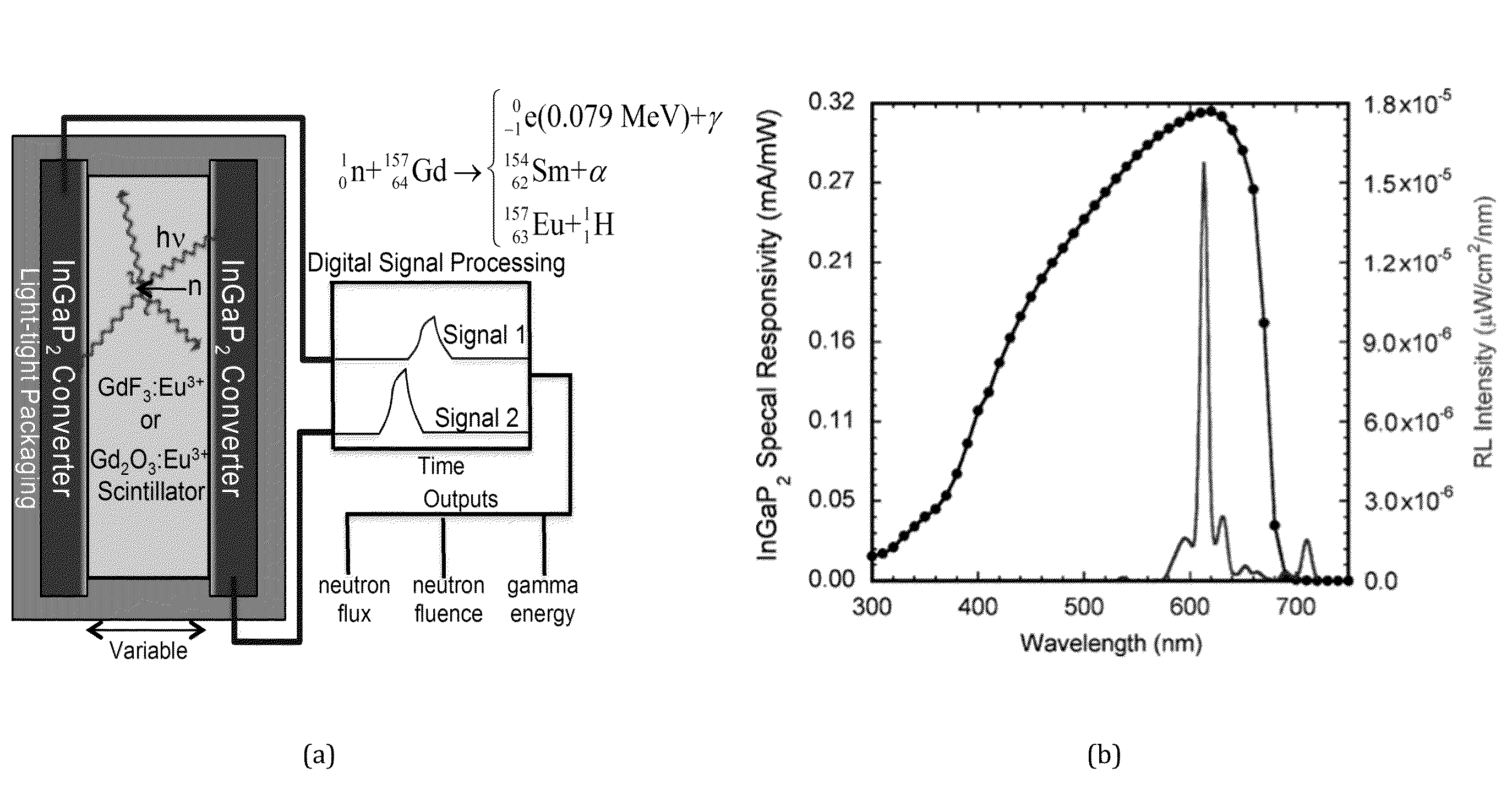Neutron detector using gd-based scintillator and wide-bandgap semiconductor photovoltaic
a technology of wide-bandgap semiconductor photovoltaic and neutron detector, which is applied in the direction of scintillation detector measurement, measurement with semiconductor devices, instruments, etc., can solve the problems of fundamental limitations in neutron sensing, potential harmful to humans, and increase in neutron-induced errors, so as to achieve maximum neutron sensing and gamma ray discrimination
- Summary
- Abstract
- Description
- Claims
- Application Information
AI Technical Summary
Benefits of technology
Problems solved by technology
Method used
Image
Examples
Embodiment Construction
[0024]The present invention is aimed at the development of battery operated, high efficiency, low-power solid-state neutron detectors with high gamma discrimination. In the ideal instantiation of the device, a 157-Gd enriched rare-earth activated single-crystal or nano-crystalline Gd-based scintillator is paired with high-efficiency low-noise InGaP2 solid-state detectors with signal processing circuitry. Single-crystal or nano-crystalline Gd-based scintillators and back-end signal processing electronics are used to maximize neutron sensitivity and gamma ray discrimination by reducing internal scattering of the generated photons.
[0025]The neutron detection technology of the present invention combines the favorable aspects of direct-conversion solid-state detection technologies (low power, scalability, low cost, high gamma discrimination, etc.) with the largest-know thermal neutron cross section of 157-Gd. FIG. 1(a) provides a schematic representation of the detector and operating mec...
PUM
 Login to View More
Login to View More Abstract
Description
Claims
Application Information
 Login to View More
Login to View More - R&D
- Intellectual Property
- Life Sciences
- Materials
- Tech Scout
- Unparalleled Data Quality
- Higher Quality Content
- 60% Fewer Hallucinations
Browse by: Latest US Patents, China's latest patents, Technical Efficacy Thesaurus, Application Domain, Technology Topic, Popular Technical Reports.
© 2025 PatSnap. All rights reserved.Legal|Privacy policy|Modern Slavery Act Transparency Statement|Sitemap|About US| Contact US: help@patsnap.com



